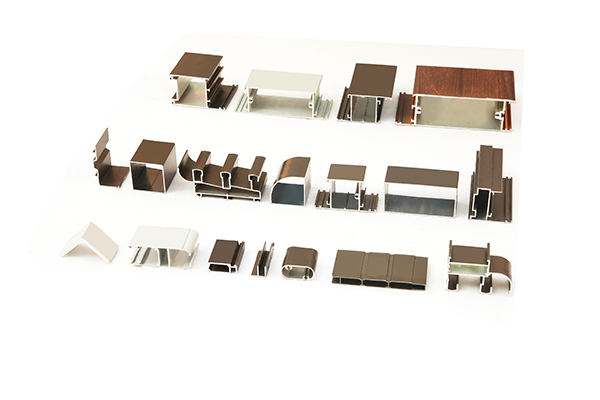- Keyword
Date:2021/04/23 hit:4492
Usually, aluminum alloy and aluminum profile need surface treatment to meet the needs of different customers. What are the common surface treatment processes for aluminum alloy? Common surface treatments of aluminum alloy include spraying, anodizing, sandblasting, passivation, polishing, coloring and oxide film treatment, etc

1. Spraying: used for external protection and decoration of equipment, usually on the basis of oxidation. Aluminum parts should be pretreated before coating to make the coating and workpiece firmly combined. Generally, there are three methods: phosphating (phosphate method), chromizing (non chromizing) and chemical oxidation.
2. Anodizing: is the process of plating a thin layer of other metals or alloys on the surface of some metals by the principle of electrolysis. Brush plating is used for local plating or repair. Barrel plating is used for small parts, such as fasteners, washers and pins. Through electroplating, we can obtain decorative protective and functional surface layers on mechanical products, and repair worn and misprocessed workpieces. The electroplating solution has acid, alkaline and acid and neutral solution added with chromium agent. No matter what plating method is adopted, the plating bath and hanger in contact with the product to be plated and the bath should have a certain degree of versatility.
3. Sandblasting is mainly used for surface cleaning. Sandblasting before painting (painting or plastic spraying) can increase the surface roughness and make a certain contribution to the improvement of adhesion, but the contribution is limited, which is not as good as chemical coating pretreatment.
4. Passivation: passivation is to make the metal surface into a state that is not easy to be oxidized, and delay the metal corrosion rate.
A kind of active metal or alloy, in which the chemical activity is greatly reduced and becomes a precious metal state, is called passivation.
If the corrosion product of metal due to the action of medium has a dense structure and forms a thin film (often invisible), which closely covers the surface of metal, the surface state of metal will be changed, and the electrode potential of metal will jump to the positive direction greatly, thus becoming a passive state of corrosion resistance. For example, when Fe → Fe +, the standard potential is -0.44v, and after passivation, it jumps to + 0.5-1v, showing corrosion resistance of precious metals. This film is called passivation film.
5. Chemical polishing: chemical polishing is a chemical processing method that uses the selective self dissolution of aluminum and aluminum alloy in acidic or alkaline electrolyte solution to level and polish the annual surface, so as to reduce its surface roughness and pH. This kind of polishing method has the advantages of simple equipment, no power supply, no limitation of product size, high polishing speed and low processing cost. The purity of aluminum and aluminum alloy has a great influence on the quality of chemical polishing. The higher the purity is, the better the polishing quality is, and vice versa.
6. Coloring: there are two main processes for coloring aluminum: one is aluminum oxidation coloring process, the other is aluminum electrophoresis coloring process. Various colors are formed on the oxide film to meet certain requirements, such as black for optical instrument parts and gold for commemorative medallions.
7.1 chemical oxidation: the oxide film is thin, about 0.5-4 μ m thick, porous, soft, and has good adsorption property. It can be used as the bottom layer of organic coating, but its wear resistance and corrosion resistance are not as good as anodic oxide film;
The chemical oxidation process of aluminum and aluminum alloy can be divided into alkaline oxidation process and acid oxidation process according to the properties of its solution.
It can be divided into oxide film, phosphate film, chromate film and chromate phosphate film.
7.2. Electrochemical oxidation, chemical oxidation of aluminum and aluminum alloy, simple equipment, convenient operation, high production efficiency, no consumption of electric energy, wide range of application, not limited by the size and shape of parts. The thickness of the oxide film is about 5-20 μ m (the thickness of the hard anodic oxide film can reach 60-200 μ m). It has high hardness, good heat resistance and insulation, higher corrosion resistance than the chemical oxide film, porous and good adsorption capacity.